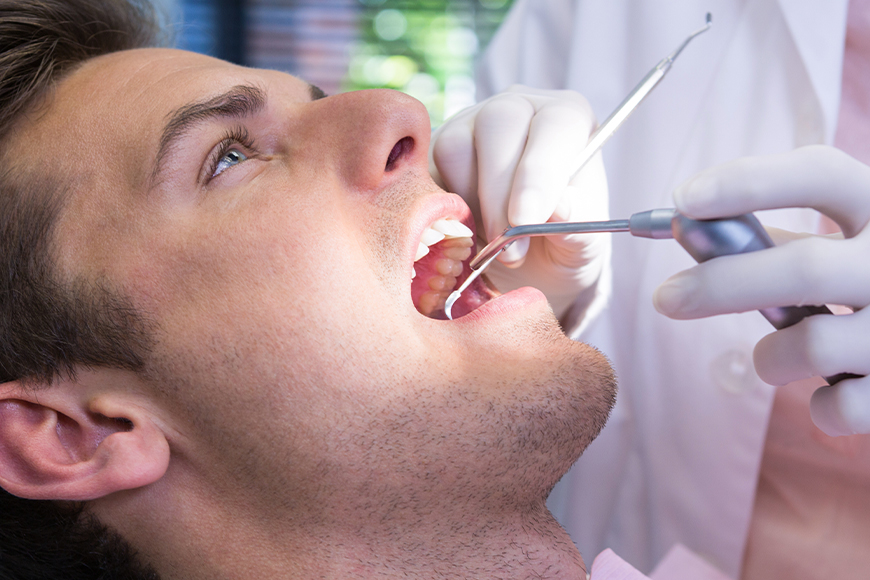The thought of a tooth extraction can send shivers down anyone’s spine. The image of sharp instruments and the fear of pain often loom large. If you’re facing a scheduled tooth removal or suspect you might need one, the most pressing question on your mind is likely: Do tooth extractions hurt?
This comprehensive guide will delve deep into this very question, providing you with a clear understanding of what to expect before, during, and after a tooth extraction procedure. We’ll break down the process, address your pain concerns, and offer practical tips to ensure a smoother and more comfortable experience. Our goal is to empower you with knowledge, alleviate your anxieties, and help you understand that while some discomfort is normal, significant pain is generally well-managed, especially with the expert care you can find at places like Madison Dentistry & Implant Center.
Understanding Why Tooth Extractions Become Necessary
Before we tackle the pain aspect, it’s crucial to understand why a tooth extraction might be recommended in the first place. Knowing the reasons can sometimes make the procedure feel less daunting. Common reasons for tooth extractions include:
- Severe Tooth Decay: When decay is so extensive that it cannot be repaired with fillings, crowns, or root canals, extraction might be the only viable option to prevent further infection and pain.
- Advanced Gum Disease (Periodontitis): This infection can loosen teeth to the point where they are no longer stable and need to be removed.
- Impacted Teeth: Wisdom teeth, in particular, often become impacted, meaning they don’t fully erupt from the gums. This can cause pain, infection, and damage to adjacent teeth, necessitating removal.
- Overcrowding: In some cases, teeth may need to be extracted to create space for orthodontic treatment (braces) to properly align the remaining teeth.
- Fractured or Broken Teeth: If a tooth is severely fractured or broken beyond repair, extraction might be the best course of action.
- Preparation for Dentures or Implants: Sometimes, remaining teeth need to be removed to prepare the mouth for full or partial dentures or dental implants.
Understanding the underlying reason for your extraction can help you appreciate the long-term benefits for your oral health and overall well-being.
What to Expect Before Your Tooth Extraction: Setting the Stage for Comfort
The journey to a comfortable tooth extraction begins even before you sit in the dental chair. Proper preparation plays a significant role in minimizing anxiety and ensuring a smoother procedure.
- Thorough Consultation and Examination: Your dentist at Madison Dentistry & Implant Center will conduct a comprehensive examination, including X-rays, to assess the tooth and surrounding bone. They will discuss the procedure in detail, explaining the steps involved and addressing any questions or concerns you may have. Don’t hesitate to voice your anxieties about pain – your dentist is there to help you feel at ease.
- Medical History Disclosure: It’s crucial to inform your dentist about your complete medical history, including any medications you are taking, allergies, and pre-existing conditions. This information helps them tailor the procedure and anesthesia to your specific needs and minimize potential complications.
- Anesthesia Options: Your dentist will discuss the anesthesia options available to manage pain during the extraction. These typically include:
- Local Anesthesia: This is the most common type used for simple extractions. A numbing medication is injected near the tooth, ensuring you don’t feel any pain during the procedure. You will be awake but will only feel pressure, not sharp pain.
- Sedation: For patients with higher anxiety levels or more complex extractions, sedation options like nitrous oxide (laughing gas), oral sedation (pills), or intravenous (IV) sedation may be offered. These help you relax and feel less aware of the procedure. In some cases, general anesthesia might be used, though this is less common for routine extractions.
- Pre-operative Instructions: Your dentist will provide you with specific instructions to follow before your appointment. This might include avoiding eating or drinking for a certain period if sedation is planned, arranging for transportation if you will be sedated, and potentially adjusting certain medications. Following these instructions diligently is essential for a safe and comfortable experience.
- Mental Preparation: It’s natural to feel anxious. Talking to a trusted friend or family member, practicing relaxation techniques like deep breathing, or listening to calming music can help manage your anxiety leading up to the appointment. Remember that millions of tooth extractions are performed safely and successfully every year.
What Happens During the Tooth Extraction: Minimizing Discomfort
The actual extraction process is where most people’s fear lies. However, modern dentistry prioritizes patient comfort, and various techniques are employed to minimize pain.
- Administering Anesthesia: The first step is the administration of anesthesia. With local anesthesia, you might feel a brief pinch as the needle is inserted, followed by a gradual numbing sensation in the area. Your dentist will ensure the area is completely numb before proceeding with the extraction. If you are receiving sedation, you will feel increasingly relaxed and may even fall asleep during the procedure.
- Loosening the Tooth: Once the area is numb, the dentist will use specialized instruments called elevators to gently rock the tooth back and forth, loosening it from the surrounding bone and ligaments. You will likely feel pressure during this stage, but you should not feel any sharp pain. Communicate with your dentist if you do experience any discomfort.
- Extracting the Tooth: After the tooth is sufficiently loose, the dentist will use forceps to carefully remove it from the socket. Again, you will primarily feel pressure rather than pain. The duration of this step depends on the complexity of the extraction. Simple extractions are usually quick, while impacted wisdom teeth may take longer.
- Cleaning and Socket Management: Once the tooth is removed, the dentist will clean the socket to remove any debris and ensure there are no remaining fragments. In some cases, they might place sutures (stitches) to help close the gums and promote healing. They may also place gauze in the socket to control bleeding.
Throughout the procedure, the dental team at Madison Dentistry & Implant Center will be attentive to your comfort and well-being. They will communicate with you, explaining each step and ensuring you are as comfortable as possible.
What to Expect After Your Tooth Extraction: Managing Post-Procedure Discomfort
While you shouldn’t feel pain during the extraction itself, some discomfort is normal in the days following the procedure as the anesthesia wears off and the healing process begins. However, this post-extraction discomfort can be effectively managed with proper care.
- Immediate Aftercare (First 24 Hours):
- Bite Down on Gauze: Your dentist will place a gauze pad over the extraction site. Apply firm but gentle pressure by biting down for the recommended time (usually 30-60 minutes). This helps to control bleeding and allows a blood clot to form, which is crucial for healing. Change the gauze as needed until the bleeding subsides.
- Pain Management: Take over-the-counter pain relievers like ibuprofen (Advil, Motrin) or acetaminophen (Tylenol) as directed by your dentist, even before the anesthesia completely wears off. For more significant pain, your dentist may prescribe stronger pain medication.
- Apply Ice Packs: Apply an ice pack wrapped in a cloth to the outside of your cheek near the extraction site for 15-20 minutes at a time, several times a day, for the first 24-48 hours. This helps to reduce swelling and pain.
- Rest and Elevate: Get plenty of rest and keep your head elevated with pillows, especially during the first night. This also helps to minimize swelling.
- Gentle Oral Hygiene: Avoid rinsing your mouth vigorously for the first 24 hours, as this can dislodge the blood clot. After 24 hours, you can gently rinse with warm salt water (1/2 teaspoon of salt in 8 ounces of water) several times a day, especially after meals. Avoid brushing directly over the extraction site for a few days. Brush and floss the rest of your teeth as usual.
- Soft Food Diet: Stick to soft foods like yogurt, soup, mashed potatoes, and smoothies for the first few days. Avoid hard, crunchy, chewy, or spicy foods that could irritate the extraction site.
- Avoid Sucking: Do not use straws, smoke, or spit forcefully, as these actions can create negative pressure in the mouth and dislodge the blood clot, leading to a painful condition called dry socket.
- Days 2-7 and Beyond:
- Continue Gentle Oral Hygiene: Gradually resume normal brushing and flossing, being careful around the extraction site.
- Monitor for Signs of Infection: Watch for signs of infection, such as increased pain, swelling that doesn’t subside, pus or drainage from the extraction site, or fever. Contact Madison Dentistry & Implant Center immediately if you experience any of these symptoms.
- Follow-Up Appointments: Attend any scheduled follow-up appointments with your dentist to ensure proper healing.
Addressing the Fear: It's More Manageable Than You Think
The fear of pain is often the biggest hurdle when facing a tooth extraction. However, it’s important to remember that:
- Modern Anesthesia is Highly Effective: Local anesthesia completely numbs the area, ensuring you don’t feel pain during the procedure. Sedation options can further enhance comfort and reduce anxiety.
- Dentists are Skilled Professionals: Dentists like those at Madison Dentistry & Implant Center are highly trained in performing extractions efficiently and with minimal discomfort. They use specialized techniques and instruments to make the process as smooth as possible.
- Post-Extraction Discomfort is Temporary and Manageable: While some soreness is expected after the procedure, it can usually be effectively controlled with over-the-counter or prescription pain medication and proper aftercare.
- Ignoring a Problematic Tooth Can Lead to More Pain: The pain and complications associated with a severely decayed, infected, or impacted tooth can be far greater than the temporary discomfort of an extraction.
The Long-Term Benefits Outweigh Temporary Discomfort
While some temporary discomfort is associated with the dental implant procedure, the long-term benefits far outweigh this short-lived inconvenience. Dental implants offer:
- Improved Functionality: Restore your ability to chew, speak, and smile with confidence.
- Enhanced Aesthetics: Provide a natural-looking and seamless replacement for missing teeth.
- Increased Stability: Unlike dentures, implants are firmly anchored in the jawbone, providing superior stability.
- Preservation of Jawbone: Implants stimulate bone growth, preventing the bone loss that often occurs after tooth extraction.
- Long-Term Solution: With proper care, dental implants can last for many years, even a lifetime.
- Improved Quality of Life: Regain your self-esteem and enjoy a better quality of life.
Conclusion: Do Tooth Extractions Hurt
While the question “Do tooth extractions hurt?” is a valid one, the answer is reassuring: with modern dentistry and proper care, the pain associated with tooth extractions is generally minimal and well-managed. The team at Madison Dentistry & Implant Center is dedicated to providing a comfortable and stress-free experience, from the initial consultation to the post-operative care.
If you are facing a potential tooth extraction, don’t let fear paralyze you. By understanding the process, communicating openly with your dentist, and following their instructions diligently, you can navigate this procedure with greater confidence and ease. Remember that a tooth extraction, while sometimes daunting, is often a necessary step towards a healthier and more comfortable smile in the long run. If you have any questions or concerns about a potential tooth extraction, contact the friendly team at Madison Dentistry & Implant Center today for a consultation.




